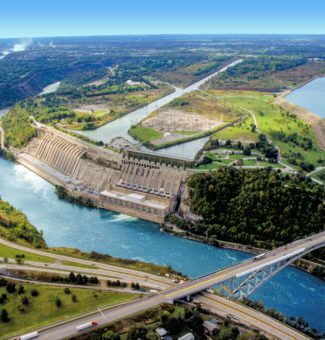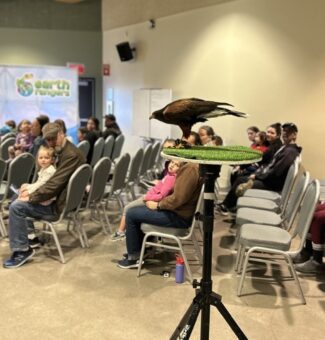Divers, drones help keep OPG’s operations running smoothly in eastern Ontario
Whether in the air or in the water, OPG’s innovative inspection services have been helping to keep hydroelectric operations in eastern Ontario running safely and reliably.
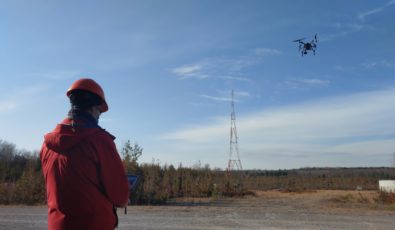
Over the past few months, drones and divers from OPG’s Inspection and Reactor Innovation (IRI) division have been deployed at numerous facilities to get a closer look at equipment, make repairs, and get the job done safely and efficiently.
The division’s 29 registered Remotely Piloted Aircraft Systems (RPAS), or drones, and its certified pilots have been particularly busy fulfilling requests for their unique services in capturing video in hard-to-reach areas.
Recently, at R.H. Saunders Generating Station (GS), an indoor drone called Elios 2 was utilized to fly inside one of the runners at the station. The drone was carefully flown down into a dewatered section of Saunders’ Unit 8 to capture video of the underside of the turbine blades to look for any signs of degradation.
“This type of inspection would’ve taken a week to get set up in the traditional manner with scaffolding. But the drone did the same job in one day, saving time and money, and improving safety for OPG’s workers,” said Stephen McGilvray, First Line Manager with IRI’s RPAS Operations.
Another similar inspection is planned for Otter Rapids GS as a drone is set to maneuver inside one of the station’s penstocks.
“This type of inspection would’ve taken a week to get set up in the traditional manner with scaffolding. But the drone did the same job in one day, saving time and money, and improving safety for OPG’s workers.”Stephen McGilvray, First Line Manager with IRI’s RPAS Operations
The use of drones for these types of tricky inspections opens up new avenues for IRI and could reduce a lot of outage time for OPG’s hydro sites, McGilvray said.
And that’s important, as efficient hydro operations will play a prominent role in helping OPG reach its goal of net-zero carbon emissions by 2040, outlined in the company’s new Climate Change Plan.
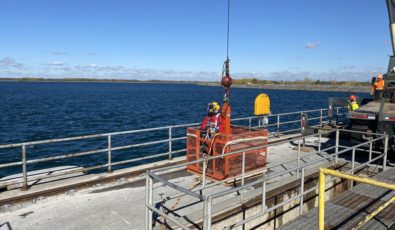
Elsewhere, drones were utilized to help capture visuals at OPG’s Calabogie hydroelectric station, which is undergoing redevelopment, and inspect OPG work sites in the Campbellford area for falling concrete and other debris.
And at the Waba Dam near Arnprior GS, a specialized drone equipped with LiDAR equipment was deployed with the help of Mohawk College to cut through vegetation covering the sprawling earth dam to get a clearer view. These images were used to help prepare for the dam’s recently completed renewal project.
Meanwhile, OPG’s team of skilled divers has also been keeping busy.
Divers have spent at least eight weeks this year at R.H. Saunders GS, doing numerous jobs, including switching out valves in the station’s scroll cases – the spiral-shaped steel intake that guides water flow into the turbine – and completing a 32-gate inspection of the Iroquois Control Dam.
Last year, the dive team was tasked with an unusual assignment to remove a stuck log in a runner at one of the units at Saunders. A diver was able to safely cut the log with a chainsaw while underwater, which saved maintenance staff from dewatering the unit.
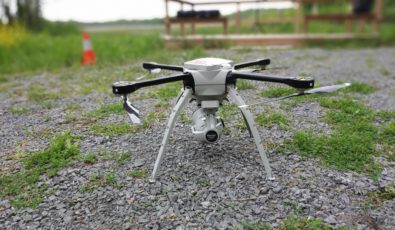
The dive team performed a similar operation this fall as they removed a log from one of the wicket gates at the station.
“There’s not much we can’t do underwater,” said Paul Campbell, a First Line Manager who oversees a team of seven full-time and 15 part-time divers working under IRI.
Additionally, the team employs a fleet of small subs, or remotely operated vehicles (ROV), to get a closer look in underwater areas that are too hazardous or hard-to-reach for divers.
Recently, an ROV was used to inspect Healey Falls GS as well as valves at Saunders GS. Campbell said he hopes to expand the sub fleet’s capabilities in the near future for more effective and impactful inspections.
“We’re trying to get more into the technical side of ROVs,” he said. “Potentially, we could deploy a sub with underwater laser capability and 3D imaging. That’s what we’re really going to dig into next year.”
Subscribe and stay informed
Sign up to receive the latest news, project updates, and event information from OPG.
